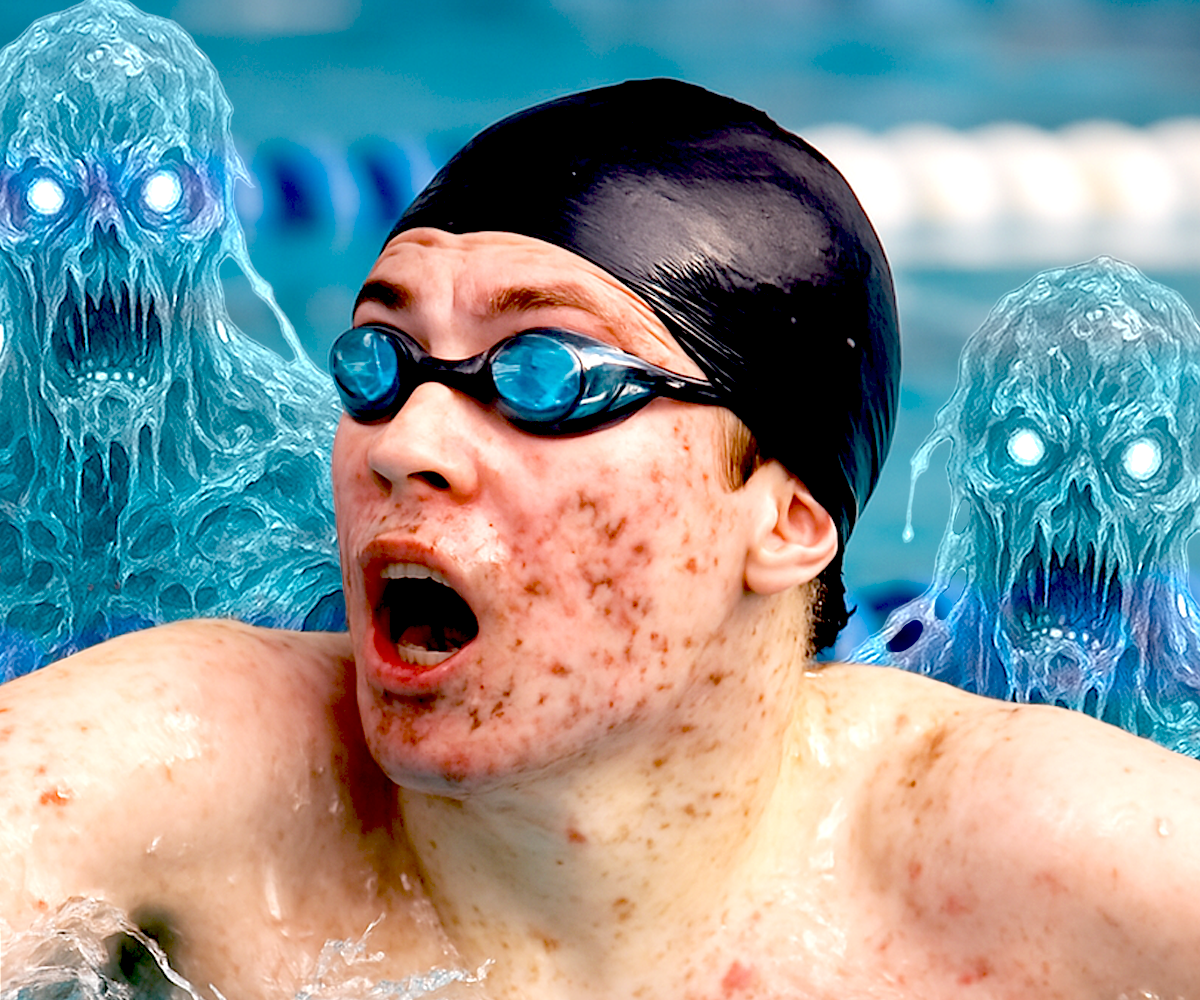

· Por Carson Matthews
How to Get Rid of Swimmers Acne
Why Swimmers Battle Uniquely Stubborn Acne
For most people, swimming is synonymous with cleanliness—after all, swimmers spend hours in sanitized water and typically shower immediately after practice. Yet paradoxically, competitive swimmers often struggle with persistent acne that seems resistant to conventional treatments. This contradiction leaves many swimmers frustrated, especially when they follow skincare routines that work perfectly well for non-athletes.
The Perfect Storm: How Swimming Creates Unique Skin Challenges
Swimming creates a distinctive set of conditions that directly impact skin health in ways other sports don't. Understanding these mechanisms is the first step toward effectively addressing "swimmer's acne."
Chlorine: Friend to Pool Safety, Enemy to Skin Barriers
Chlorine is essential for keeping pools safe from harmful bacteria, but this powerful chemical disrupts your skin's natural protective barrier. Regular exposure leads to what dermatologists call "chlorine-induced barrier degradation"—essentially, the breakdown of your skin's first line of defense.
When this barrier is compromised, several skin problems cascade:
- Increased porosity: Your skin becomes more vulnerable to bacterial invasion
- Disrupted pH balance: Chlorinated water alters your skin's naturally acidic environment
- Sebum overproduction: Your skin produces more oil to compensate for chlorine's drying effects
This combination creates the perfect environment for acne-causing bacteria to flourish—precisely when your skin's natural defenses are weakened.
The Swim Cap Effect: Trapped Heat and Bacteria
The equipment essential to competitive swimming inadvertently contributes to acne problems. Swim caps create a warm, moist environment around the hairline and forehead—ideal conditions for bacterial growth. The friction from cap edges also causes micro-irritations that become entry points for bacteria.
This explains why many swimmers develop distinctive acne patterns along their cap lines, regardless of how diligently they cleanse after practice.
The Rebound Effect: Over-Drying Leads to Overproduction
Perhaps the most counterintuitive aspect of swimmer's acne stems from how skin responds to constant chlorine exposure. After swimming, the skin is stripped of natural oils, leading many swimmers to assume their skin is "clean." However, this extreme dryness triggers the sebaceous glands to overcompensate by producing excess oil—often within hours of leaving the pool.
Many swimmers then apply harsh, drying acne treatments, inadvertently creating a vicious cycle of stripping oils followed by overproduction of sebum.
Why Traditional Acne Solutions Fail Swimmers
Standard acne treatments are designed primarily for hormonal or bacterial acne that occurs under normal environmental conditions. These products typically:
- Focus on oil control rather than barrier repair
- Can't address chlorine-induced pH disruption
- Aren't formulated to combat the specific bacteria that thrive in pool environments
- Offer no protection against future chlorine exposure
For swimmers, these conventional approaches often worsen the problem by further compromising the skin barrier that chlorine has already damaged.
The Swimmer's Solution: A Different Approach
Effectively treating swimmer's acne requires a specialized approach that addresses the unique challenges of chlorine exposure. An effective regimen should:
1. Restore Barrier Function
Instead of stripping away oils with harsh cleansers, swimmers need products that repair the skin's protective barrier. Ingredients like ceramides, niacinamide, and fatty acids help rebuild what chlorine damages.
2. Normalize pH Balance
Chlorine creates an alkaline environment on the skin, disrupting its natural acidity. Products with gentle acidic ingredients help restore the skin's optimal pH, creating an environment where acne bacteria struggle to survive.
3. Provide Balanced Hydration
Rather than completely stripping oils (which triggers overproduction) or heavily moisturizing (which can clog pores), swimmers need balanced hydration that normalizes sebum production.
4. Create Pre-Swim Protection
Perhaps most importantly, swimmers benefit from products that create a protective barrier before entering the pool, minimizing chlorine's direct contact with skin.
Ballgoyz & Ballgirlz: Engineered for Swimmers
Recognizing the unique challenges swimmers face, Ballboyz & Ballgirlz has developed a specialized system designed specifically for competitive swimmers.
Their Antibacterial Face Scrub contains gentle exfoliants that remove dead skin cells without stripping natural oils, while specialized compounds help restore the skin's protective barrier after chlorine exposure.
What makes their approach particularly effective for swimmers is the Beach Bliss formula, which creates a protective shield that maintains effectiveness even through hours of pool exposure. This pre-swim protection minimizes chlorine contact with skin while allowing normal perspiration.
For existing breakouts, their Hyper-Targeting Patches deliver focused treatment overnight that addresses bacteria without compromising the surrounding skin barrier.
Beyond the Pool: A Holistic Approach
While specialized skincare is essential, swimmers can take additional steps to minimize chlorine-induced acne:
- Immediate post-swim cleansing: Rinse with fresh water immediately after swimming
- Vitamin C neutralization: Using vitamin C-based products helps neutralize chlorine residue
- Non-occlusive moisturizing: Light, non-comedogenic moisturizers help restore hydration without clogging pores
- Barrier protection: Applying a thin layer of specialized protection before swimming can significantly reduce chlorine contact
The Final Lap: Consistency is Key
For swimmers, acne management requires consistency and an understanding that conventional advice may not apply. What works for non-athletes often fails for those spending hours in chlorinated water.
By adopting a specialized approach that addresses the unique challenges of swimming—barrier disruption, pH imbalance, and the cycle of drying and oil overproduction—swimmers can finally achieve the clear skin that seems so paradoxically elusive in a sport associated with cleanliness.
The pool might be your second home, but with the right approach, it doesn't have to show on your skin.
